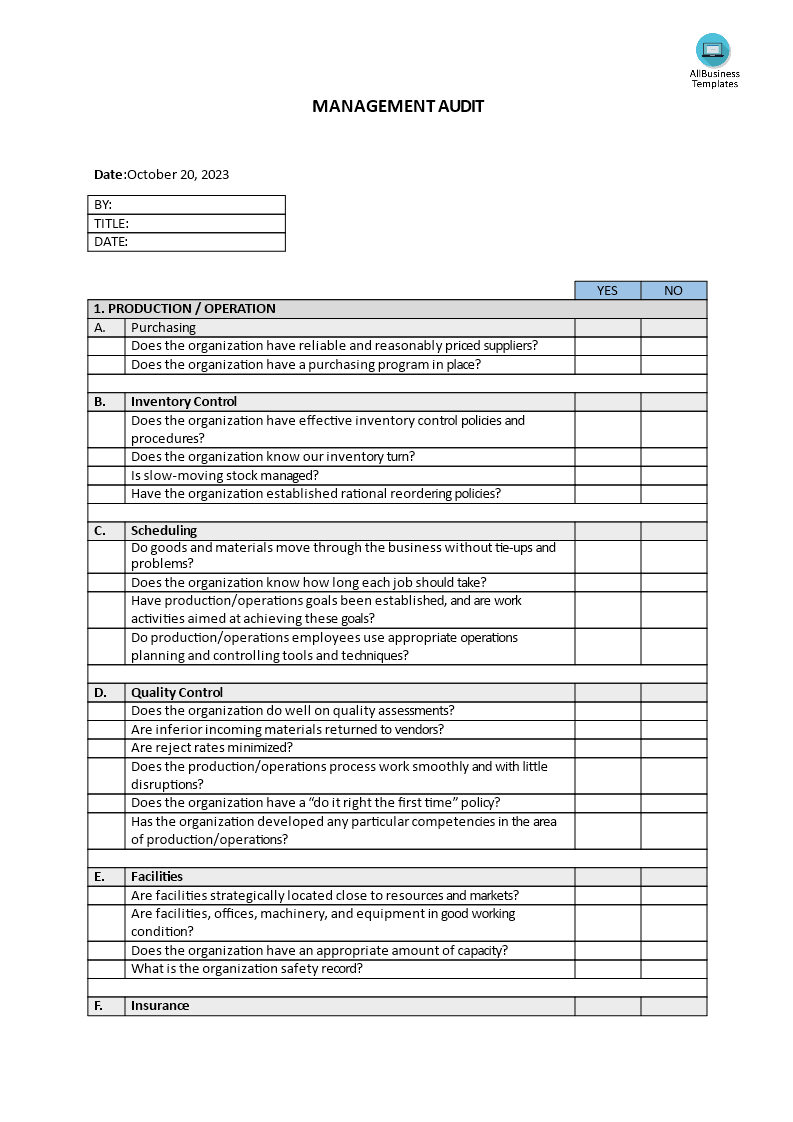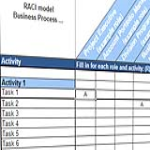Management Audit

Guardar, completar los espacios en blanco, imprimir, listo!
Looking for a management audit checklist? An audit of a company's management follows what steps? Download our sample checklist template now!
Vandaag: USD 2.99
Descárgalo ahora

Formatos de archivo premium disponibles:
.docx- Este documento ha sido certificado por un profesionall
- 100% personalizable
Business Negocio management administración audit auditoría
Looking for a management audit checklist? An audit of a company's management follows what steps? We have a comprehensive checklist template that you can download. It includes everything you need to conduct a management audit, from assessing the company's performance to evaluating the organizational structure. Download our sample checklist template now!
A management audit checklist is a structured list of items, questions, or criteria that auditors or evaluators use to assess and evaluate various aspects of an organization's management processes, practices, and performance. This checklist serves as a systematic tool to ensure that all relevant areas are reviewed and assessed during a management audit. It helps auditors gather information, identify strengths and weaknesses, and make recommendations for improvements.
While the specific items on a management audit checklist can vary depending on the organization's goals, industry, and the scope of the audit, here are some common categories and elements often included in such checklists:
- Leadership and Governance:
- Review the composition and effectiveness of the board of directors.
- Evaluate the leadership qualities and competencies of top executives.
- Assess the organization's adherence to governance and ethical standards.
- Organizational Structure:
- Examine the hierarchy of management positions and reporting relationships.
- Evaluate the distribution of responsibilities and decision-making authority.
- Strategic Planning and Goal Alignment:
- Assess the organization's strategic planning processes.
- Verify the alignment of organizational goals with its mission and vision.
- Financial Management:
- Review budgeting processes and financial controls.
- Evaluate cost control and resource allocation practices.
- Examine financial reporting and transparency.
- Resource Management:
- Assess human resource management practices, including hiring, training, and performance evaluation.
- Evaluate the allocation and utilization of financial resources.
- Performance Measurement and Metrics:
- Review key performance indicators (KPIs) and metrics used to assess performance.
- Evaluate the relevance and effectiveness of these metrics in measuring progress toward objectives.
- Risk Management:
- Examine the organization's risk assessment and mitigation processes.
- Assess preparedness for unexpected events or crises.
- Compliance and Legal Obligations:
- Verify compliance with relevant laws, regulations, and industry standards.
- Examine adherence to internal policies and procedures.
- Communication and Information Flow:
- Evaluate the effectiveness of communication channels within the organization.
- Assess how information is disseminated and whether it reaches the right stakeholders.
- Ethical and Governance Standards:
- Examine adherence to ethical standards and codes of conduct.
- Evaluate transparency, accountability, and ethical conduct at all levels.
- Customer and Stakeholder Relations:
- Assess the organization's relationship with customers, clients, and stakeholders.
- Review customer service practices and feedback mechanisms.
- Recommendations and Action Plans:
- Identify areas for improvement based on audit findings.
- Develop action plans and recommendations for addressing weaknesses and enhancing management practices.
- Follow-up and Monitoring:
- Establish mechanisms for monitoring the implementation of recommended improvements.
A management audit checklist serves as a guide for auditors to ensure that they systematically evaluate each area of interest. It helps maintain consistency and thoroughness in the audit process and provides a structured basis for reporting findings and making recommendations to management.
Download this professional Management Audit template now!
For more business templates? Just browse through our database and website! You will have instant access to thousands of free and premium business templates, legal agreements, documents, forms, letters, reports, plans, resumes, etc., which are all used by professionals in your industry. All business templates are ready-made, easy to find, wisely structured, and intuitive.
DESCARGO DE RESPONSABILIDAD
Nada en este sitio se considerará asesoramiento legal y no se establece una relación abogado-cliente.
Deja una respuesta. Si tiene preguntas o comentarios, puede colocarlos a continuación.
